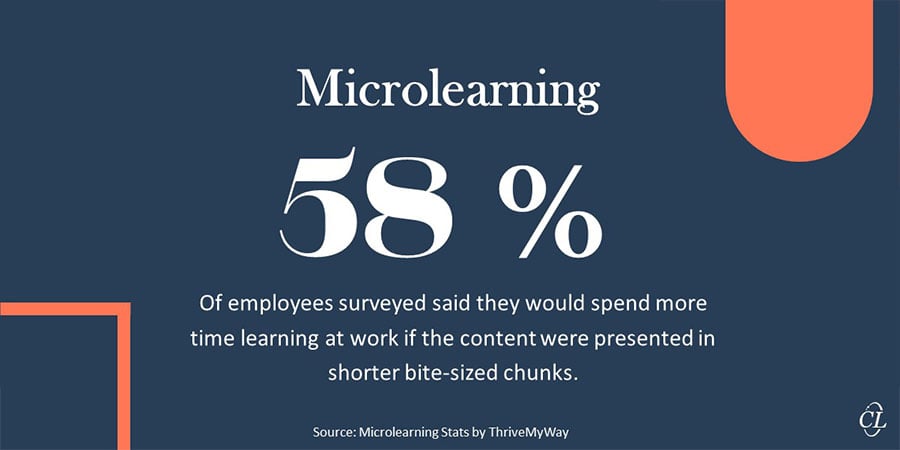4 Best-Kept Secrets to Developing Microlearning Content

Getting hold of the right content and crafting it to fit a microlearning asset, without losing its core meaning is a dilemma that many training managers face. Content curation is a critical aspect of any learning program for that matter. The effectiveness of a training program is heavily dependent on the content portion.
Unlock the 4 Secrets to Developing Microlearning Content
Discover the industry’s best-kept secrets to creating top-notch microlearning content to enhance productivity and adoption.
- Plan the A to Z of Microlearning Implementation
- Identify The Learning Lifecycle
- Use a Bird’s Eye View
- Pick the Right Content Format
The Microlearning Content Curation Dilemma
So how should training managers create microlearning content that is effective and efficient? Let’s unlock the secrets:
Plan the A to Z of Microlearning Implementation
Plan meticulously for every step of the microlearning implementation. Gather all the requirements by asking the relevant questions. Here’s what the plan will help you define:
- Learner Profile & Demographics
- Training needs with respect to business goals
- Microlearning Training format
When you put a plan in place, content curation becomes easy. Right from the curation, and the selection, to the placement of information; you get to evaluate and devise an effective content strategy that leads to an efficient microlearning implementation.

Identify The Learning Lifecycle
Microlearning assets can be used at different stages of a learning lifecycle. Identify which part of the learning lifecycle will be impacted by the microlearning module in question. Here’s a look at the different stages of a learning lifecycle:
- Pre-Training: Use microlearning to inspire, inform, evaluate, and garner interest from learners.
- In Training: Apply microlearning modules to teach skills, concepts, and drive behavioral change.
- Post Training: Utilize microlearning to assess, reinforce, support, and enhance knowledge levels.
The microlearning modules may be scattered across the lifecycle or limited to only certain phases, that will be governed by the availability of budgets, time, and resources. Based on the stage and learning need, you will be able to judge the content requirements.
→ Download Now – Where Does Microlearning Fit in Your Learning Strategy?
Use a Bird’s Eye View
You’ve got an implementation plan in place, and you’ve identified the lifecycle stages, you may wonder what’s next. The training portfolio. Yes, you read that right. Get a bird’s eye view of your entire training portfolio including modules, assessments, visual aids, and interactivities; and consider the places where microlearning modules will be a great value add. This also gives you the opportunity to identify elements that can be converted into microlearning modules for enhanced efficiency.
For example, the set of modules may have concepts, principles, facts, processes, and/or procedures, and reusable learning objects such as visual graphics, multimedia, and so on. Based on the learning objective at hand, these modules and elements can be factored into microlearning, meeting the need, and thereby converting the newly designed microlearning asset into a reusable learning object.
Pick the Right Content Format
Microlearning assets can be designed under various types of formats to meet training needs. To pick the right format for content delivery, you need to have a clear understanding of the learner’s performance requirements and skill gaps. Here are some discovery questions you can ask:
- Does the format resolve the need?
- Will the asset compact?
- How will the asset be shared with the learner?
- Where will learners access it?
- Can it be repurposed?
Based on the need, you can have one or more than one microlearning assets in your training curriculum.
Now that the cat’s out of the bag, are these secrets that mysterious? Yes, training managers often overlook the need to plan, identify and strategize on these key aspects of microlearning implementation, which leads to the true potential of microlearning being untouched.

Create Engaging Microlearning Content – Best Practices
Creating engaging content every time is a tedious task. Over the years, the training and development industry has identified best practices that every training manager can benefit from. What are these tried-and-tested best practices? Let’s check them out:
Reuse is the Mantra – Repurpose and incorporate any existing valuable content smartly within microlearning content. This also helps avoid any duplication of effort or resources. Update the microlearning content periodically with the latest available information.
Leverage Authoring Tools – Pick up a responsive eLearning authoring tool to ensure the designed microlearning asset is responsive to automatically adjust the content based on the screen size and screen resolution of the device used to consume the content. Every learner will be able to learn on the same page, irrespective of the device used.
Rich Multimedia Graphics – Using rich multimedia graphics naturally drives up the engagement factor. The best part about microlearning assets is that you can play with different digital multimedia to present content. Audio-Visual elements, stunning graphics, simulations, immersive reality, and animations –are a few popular options among learners.
Focus on Engaging – The focus shouldn’t be on developing a short, compact microlearning asset. Rather the focus should be on making the content interactive, engaging, and thought-provoking. When learners interact with microlearning content, they enhance their knowledge retention and put their problem-solving and decision-making skills to the test. Ensure to add some form of interactivity – such as simulations, games, clickables, and so on.
Keep it Simple – Keep a conversational tone in the content be it either in text or audio. The simplicity of informal nuggets with a clear conversational tone, focused on dedicated objectives, allows the learners to relate to the content faster.
Here’s a short video stating 5 Key considerations from the Microlearning Design Checklist:
Enrich Training with Microlearning
To summarize, defining microlearning content is a crucial step in the implementation of the microlearning strategy. Follow the four secrets and best practices from the industry to harness the real power of Microlearning. To gain practical ideas to jumpstart implementation and provide performance support, have a look at our comprehensive eBook on Microlearning today!
Editor’s note: This post was originally published in June 2023 and has been updated for comprehensiveness.




![What are the 10 Popular Microlearning Platforms in 2024? [Infographic]](https://blog.commlabindia.com/hubfs/blogs/popular-microlearning-platforms-info.jpg)
![Do You Know the 8 Scenarios Where Microlearning Works the Best? [Infographic]](https://blog.commlabindia.com/hubfs/blogs/scenarios-microlearning-works-best-info.jpg)
